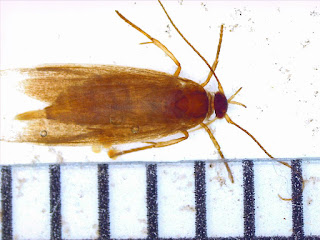It's almost the end of the semester and a month of opportunity (and recovery) is just around the corner. I wanted to take a moment to reflect on the good and bad and maybe plan something for the weeks ahead.
Teaching
Teaching one and a half new courses this semester. Plant Taxonomy is an upper level course with a 2 hour lab and 3 hour lab (for a total of three credits). I did a survey of plant families in the lecture with these last few lectures going over molecular techniques and plant conservation. The lab is nearly all field trips and students had two collect twenty five plants. I should have spent more time on the front end covering the terms used in identification (e.g., actinomorphic flowers, sympetalous calyx). I'll probably put this forward through the curriculum committee.
The other course was Tree and Shrub Identification for one hour. It really needs to be longer - one hour isn't long enough to get around campus. Still, I think the students have enjoyed it. We'll see when the surveys come in.
Taught 1/3 of the Pop Evo course for sophomores. I haven't changed much. Teaching labs as well - these still need to be tweaked. Students do not like simulations compared to hands-on labs (what does that say for remote teaching of labs???).
Chairing
Behind on a bunch of tasks - including putting in proposals that totally change our major. No kidding.
Research
Collecting at Lehigh Gap is wrapped up. We are going to use tissue samples to build a food web and compare it to one we published almost a decade ago (published here). We're still sorting insects and that is going really really slow. Plant samples are nearly done and ready to go out.
Coffee book is done and waiting for it to be published. I have very mixed feelings about it.
I'm really slacking on getting older material out and working on grants. It's been hard to focus on anything other than developing the plant course. Oi!
I did move the invertebrate database to Ecdysis (https://ecdysis.org/). Most entries need to be tweaked and I need to go through thousands (just over 8000) of images and link them to the catalog entry. Yea. And I also moved the herbarium records to the Mid-Atlantic Herbaria Consortium (https://midatlanticherbaria.org/portal/). The Morris Arboretum is scanning all the specimens (just over 4000) and I will need to link the images to the catalog entry. Yea.























